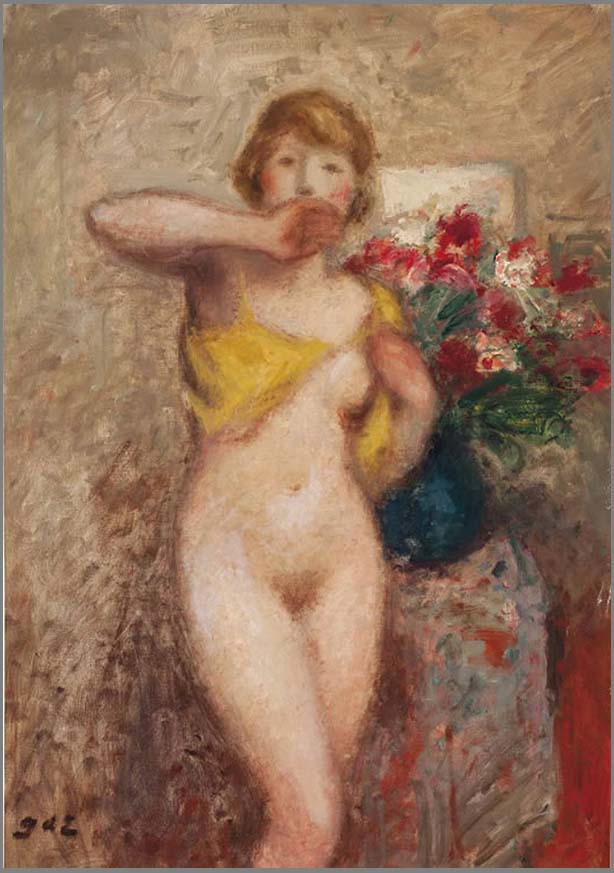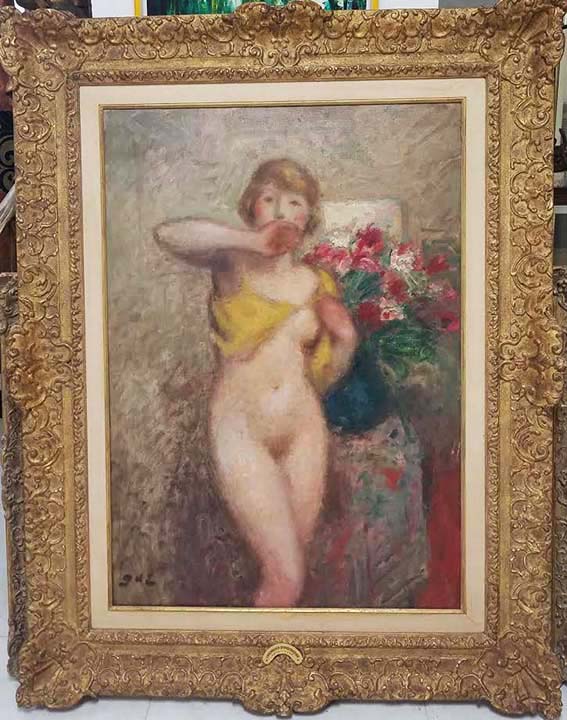Georges d'Espagnat
1870-1950
Much like his friends and colleagues of the Nabis, Georges d'Espagnat was keenly interested in the decorative possibilities of modern art and the creation of a modern interior. While Vuillard, Bonnard, A. André and Denis had launched their careers with a commission to complete tableware and stained-glass designs for the art dealer and Art-Nouveau originator Sigfried Bing beginning in 1895, d'Espagnat began taking complete decorative commissions only after he met the group in 1898. He completed decorative commissions for the Paris apartment and villa at Villennes-sur-Seine of the major Impressionist collector Dr. Viau in 1898 (Viau owned the largest collection of Renoir in private hands and knew the Nabis painters personally), the Château de Bénavent in l'Indre, near Tours, the home of André Germain in Paris, and the dining room in the Paris apartment of Durand-Ruel, the great dealer of the Impressionists and of d'Espagnat himself. In his completion of these decorative suites, d'Espagnat maintained a style much closer to that of Renoir, with whom he maintained a close friendship, and created highly charming interiors of soft, sparkling color.
An artist who created a diverse oeuvre, Georges d'Espagnat constantly strove for originality and independence, marking a place for himself among the modern masters. While he was associated with Renoir, the Fauvists and the Nabis, d'Espagnat remained on the outside of these movements, creating a body of work that was uniquely personal.
Born in Melun in 1870, Georges d'Espagnat's family moved to Paris when he was a young man. A strongly independent student, he rejected the traditional places of artistic education available in the capital, claiming to have spent only four hours at the Ecole des Beaux-Arts. Instead he attended classes at the free academy and drew at the Louvre. D'Espagnat began his public career at the Salon des Refusées in 1891, and later exhibited at the Salon of the Société Nationale and the Salon des Independents, both venues known for their openness to modern trends. In 1903 d'Espagnat, along with the architect Frantz Jourdain and critic Ivanhoe Rambosson, founded the Salon d'Automne with the purpose of creating an alternative exhibition venue for young artists and for retrospectives of the modern artists who had been rejected at the end of the earlier century.
D'Espagnat became closely acquainted with many of the Impressionists and Post-Impressionists including Renoir, Vuillard, Andre, Bonnard and Denis. Between 1905-10, he stayed with Renoir on several occasions accompanied by Valtat, and visited Italy, Spain, Portugal London, Dresden, Munich and Antwerp.
Museums:
Bordeaux, Musée des Beaux-Arts; Brussels, Musée Royaux de Beaux-Arts de Belgique, Musée d'Art Moderne; Douai, Musée de la Chartreuse; Nantes, Musée des Beaux-Arts; New York, Metropolitan Museum of Art, Lehman Collection; Paris, Musée Eugène Delacroix; Paris, Musée d'Orsay; Rouen, Musée des Beaux-Arts; Saint-Tropez, Musée d'Annonciade;


